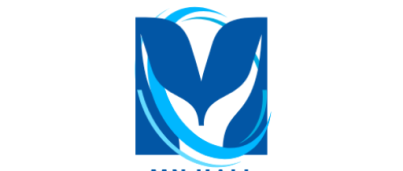North Africa is a linguistically rich region where Arabic, Berber (Tamazight), and French dominate official and societal communication. Due to its Islamic heritage, Arab culture, and colonial history, the region exhibits a unique blend of languages used in government, education, media, and everyday life. Discover in this hall, the Official Languages in North African Countries, including Arabic, Berber, French, and others. Learn how colonial history and indigenous culture shape language policies in the region.
Official Languages in North African Countries
Table of Contents
- Introduction
- Overview of Language in North Africa
- List of Official Languages by Country
- Colonial Influence on Language
- Role of Indigenous Languages (Berber/Tamazight)
- Multilingualism in Society
- Revision Questions
- Conclusion
Overview of Language in North Africa
While Modern Standard Arabic is the common official language across all North African countries, it is often supplemented by:
- French (in former French colonies like Algeria, Morocco, and Tunisia)
- Berber (Tamazight) (recognized in Morocco and Algeria)
- English (emerging as a second language in Egypt and Sudan)
The language situation reflects a colonial legacy, ethnic diversity, and modern educational policies.
List of Official Languages by Country
Here’s a table listing North African countries and their official languages:
| No. | Country | Official Language(s) |
|---|---|---|
| 1 | Algeria | Arabic, Berber (Tamazight) |
| 2 | Egypt | Arabic |
| 3 | Libya | Arabic |
| 4 | Mauritania | Arabic (Hassaniya); French (used in government) |
| 5 | Morocco | Arabic, Berber (Tamazight) |
| 6 | Sudan | Arabic, English |
| 7 | Tunisia | Arabic |
Note: While not always constitutionally official, French is widely used in Algeria, Tunisia, Morocco, and Mauritania for administration, law, business, and higher education.
Colonial Influence on Language of North Africa
Most North African countries were colonized by France, which introduced French as the language of administration, education, and diplomacy. Although many countries have Arabic as their sole constitutional language, French remains:
- A second language in schools and universities
- The language of commerce and legal systems
- A lingua franca for regional and international affairs
Sudan, formerly colonized by Britain and Egypt, retains English in education and international communication.
Role of Indigenous Languages (Berber/Tamazight)
The Berber language family, especially Tamazight, holds official status in:
- Morocco (recognized since 2011)
- Algeria (recognized since 2016)
Berber languages are taught in schools, used in media, and protected by cultural policies. These efforts aim to preserve Amazigh identity, which predates Arab conquest in the region.
Multilingualism in Society in North Africa
In daily life, North Africans often switch between multiple languages depending on context:
- Arabic dialects are used informally and locally (e.g., Egyptian Arabic, Moroccan Darija).
- Modern Standard Arabic is used in media, official documents, and religious settings.
- French is used in higher education, science, law, and international relations.
- Berber languages are spoken in rural and Amazigh communities and gaining public visibility.
This multilingual environment enables communication across ethnic and regional lines but also creates debates over language policy and national identity.
READ ALSO the complete List of – North African Countries and Their Capitals
Revision Questions and Answers on the Official Languages in North African
- What is the most widely recognized official language across all North African countries?
Arabic. - How many North African countries officially recognize Berber (Tamazight) as a national language?
Two: Algeria and Morocco. - Which colonial language continues to be widely used in administration and education in Algeria and Tunisia?
French. - Which North African country recognizes both Arabic and English as official languages?
Sudan. - What are the official languages of Mauritania?
Arabic (Hassaniya Arabic); French is also widely used in administration. - Which two countries constitutionally recognize Berber (Tamazight) as an official language?
Morocco and Algeria. - Why is French still widely used in countries like Morocco and Tunisia?
Because of their colonial history under French rule and continued use in education, law, and government. - What role does Modern Standard Arabic play in North African countries?
It is used in government, formal writing, education, and religious contexts. - What are the everyday spoken Arabic varieties in North African societies called?
Dialects like Egyptian Arabic, Moroccan Darija, Algerian Arabic, etc. - Which language group predates the Arab presence in North Africa and is now gaining official status?
Berber (Amazigh) languages.
Conclusion on Official Languages in North African
The official languages of North African countries reflect a complex interaction of history, politics, and cultural identity. While Arabic remains the unifying official language, French, Berber, and English play significant roles in governance, education, and social life. Understanding this linguistic diversity is key to appreciating the multicultural nature of North Africa.
